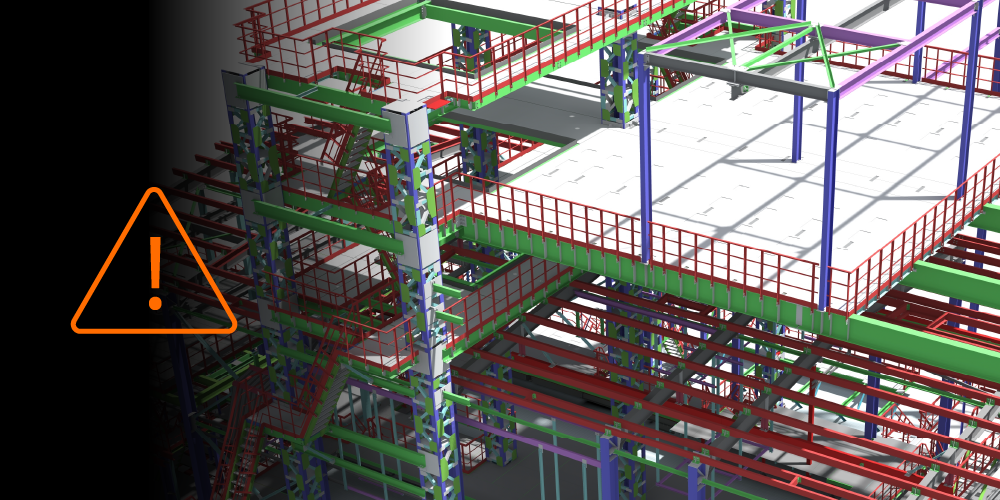Related Articles
— 8 min read
Extension of Time Claims: Best Practices for Australian Commercial Builders

Last Updated Oct 21, 2025

Josh Krissansen
47 articles
Josh Krissansen is a freelance writer with two years of experience contributing to Procore's educational library. He specialises in transforming complex construction concepts into clear, actionable insights for professionals in the industry.
Last Updated Oct 21, 2025

Extension of time (EOT) claims are one of the most contested issues in Australian construction contracts. They determine whether a contractor receives relief from liquidated damages when delays occur, or loses entitlement because of a missed notice or incomplete claim.
Recent Federal Court decisions highlight the stakes. In one case contractors BSF and HCPS submitted valid EOT claims for more than 800 days of delay.
Their claims were invalidated not due to lack of cause, but because they failed to include the required level of detail in their notices, showing that even compliant timing isn’t enough if the claim doesn't meet contractual standards.
For contractors, project managers, and principals, the lesson is clear: extension of time isn’t automatically granted. It must be earned through timely notices, accurate documentation, and strict compliance with contract procedures.
This guide explains how EOT clauses work in Australian construction contracts, the common grounds for claims, and the steps you need to follow to ensure every claim stands up to scrutiny.
Table of contents
What Is an Extension of Time in Construction?
An extension of time (EOT) adjusts the contractual date for practical completion when a delay arises beyond the contractor’s control. Standard Australian construction contracts such as AS 4000 and AS 2124 include EOT provisions to fairly allocate delay risk
EOT clauses protect contractors from liquidated damages by granting time relief for excusable events such as weather disruptions, latent site conditions, or supply chain issues.
To preserve entitlement, contractors must follow a two-step process:
- Issue a timely notice of delay to the superintendent or principal
- Submit a formal EOT claim requesting an adjustment to the completion date.
Failure to comply triggers time bars, loss of entitlement, and exposure to disputes.
Common Reasons to Request an Extension of Time
Valid contractual grounds must back extension of time (EOT) claims. The most common delay events in Australian commercial construction include:
Severe Weather Events
Delays caused by storms, flooding, bushfires, or cyclones may justify an EOT if they exceed typical weather expectations for the project location. These events commonly block site access and disrupt the critical path.
Unforeseen or Latent Site Conditions
Latent site conditions such as contaminated soil, unstable ground, or subsurface obstructions often require redesign, approvals, or remediation before work can continue.
Client-Caused Delays
Client-caused delays, such as design changes, late approvals, or incomplete documentation can trigger variations, disrupt subcontractor sequencing, and stall downstream activities.
Material Shortages and Supply Chain Disruptions
Material shortages or supply chain disruptions, like port congestion or long lead times for steel and concrete, can stall multiple trades and extend the overall project duration.
Industrial Actions and Workforce Shortages
Industrial action, like strikes or lockouts, or skilled labour shortages can halt progress, particularly on regional projects or during peak construction periods.
Force Majeure Events
Force majeure events, like natural disasters or pandemics, can shut down site activity, restrict access, or create safety risks that force work to pause.
Other Common Causes
Other common causes for EOT claims include: delays in permits or statutory approvals, subcontractor default affecting critical path activities, safety incidents requiring site shutdown, and incomplete or poor-quality drawings leading to rework.
How to Properly Claim an Extension of Time
EOT claims demand precision. Australian contracts impose strict procedural and evidentiary requirements. To preserve entitlement, follow these steps:
1. Identify the Delay Immediately
Track progress daily and record deviations immediately. Align site diaries, schedules, and superintendent reports so documentation supports future claims
2. Issue a Timely Notice of Delay
Most standard contracts require written notice—often within 28 days of awareness. Notices must state the cause, timing, likely impact, and relevant clause, and be submitted by the agreed method. Late or incomplete notices can void entitlement.
3. Quantify the Critical Path Impact
EOT claims must demonstrate critical path impact. General disruptions are insufficient. Use updated schedules to:
- Identify affected activities and quantify delay duration
- Link each delay to RFIs, approvals, or access issues
- Support findings with planning software or superintendent reports
4. Prepare and Submit a Formal EOT Claim
Submit claims in the required format and timeframe. Support with schedules, correspondence, weather data, site photos, and cost records, plus evidence of mitigation steps taken.
5. Maintain Transparent Communication
Keep principals and superintendents informed with early communication. Transparency improves resolution and reduces disputes.
6. Implement Mitigation Measures and Document Them
Demonstrate that steps were taken to manage and limit the impact of the delay. This may include:
- Resequencing work
- Reallocating resources
- Accelerating specific tasks to recover time
Document each action and include outcomes in the EOT claim. Proving active mitigation supports credibility and strengthens entitlement.
7. Audit for Full Contractual Compliance
EOT claims are easily invalidated by procedural errors. Establish internal workflows and train project managers to ensure compliance before submission.
Principal Discretion and the Prevention Principle
Under AS 4000, the superintendent may grant an extension of time even if procedures weren’t strictly followed. This reflects the prevention principle: a principal cannot enforce liquidated damages for delays they caused.
If a principal contributes to a delay but denies time relief, they may lose the right to enforce penalties. Reasonable use of EOT discretion reduces disputes and supports fair outcomes.
Australian legal commentary confirms that AS 4000’s EOT mechanism can neutralise the prevention principle by formally accounting for principal-caused delays. This preserves contractual fairness even when compliance is imperfect.
Superintendents must exercise discretion reasonably and in good faith to maintain balanced contracts and healthy working relationships.
Understanding Time Bars and Contractor Responsibilities
Time bars are strict contractual deadlines for EOT notices and claims. Miss one, and even a valid delay can forfeit entitlement.
These clauses feature in AS 4000, AS 2124, and most other standard forms. They’re often written as conditions precedent, meaning your entitlement disappears if you don’t follow the rules exactly.
Consequences are steep: lost claims, liquidated damages, or no cost-recovery at all. Courts in Australia consistently uphold time bars, unless the obligations are vague or unfair.
In CMA Assets Pty Ltd v John Holland Pty Ltd [2015] WASC 217 the contractor failed to submit delay notices. Despite valid reasons for delay, the court ruled entitlement was lost entirely. Without notice, there is no claim
Contractor Responsibilities Under Time Bar Provisions
Contractors must embed compliance into project operations:
- Review all notice and claim obligations at contract award.
- Monitor program progress daily to detect delays as they arise.
- Issue delay notices within the required period, often 28 days or less.
- Maintain a complete audit trail, including schedules, RFIs, diaries, weather logs, and correspondence.
- Submit formal extension of time claims with a clear explanation of the delay, critical path impact, and mitigation actions taken.
Managing Compliance Proactively
Time bar compliance is not just contract admin. It must be built into project systems, training, and planning from day one
Use Project Management Software Intentionally
Leverage digital tools to log delay events as they occur, centralise documentation, and automate alerts tied to notice periods. Avoid relying on manual tracking or fragmented systems across teams.
Standardise Internal Workflows
Develop repeatable processes for identifying, recording, and escalating delay events. Use checklists or templates to ensure every claim meets contractual requirements.
Train Project and Site Managers
Ensure team leaders understand the contract’s time bar provisions and can act immediately when disruptions occur. Provide practical training on delay recognition, documentation standards, and submission protocols.
Conduct Early Contract Reviews
At project start-up, audit the contract to map time bars, notice deadlines, and claim procedures. Clarify vague language and distribute internal guidance to reduce interpretation risk.
Build in Time and Accountability
Incorporate reasonable float into the program to manage minor disruptions without risking breach. Assign clear responsibilities for tracking compliance and make it part of regular reporting cycles.
Failing to manage time bars is not a documentation issue. A commercial risk affects entitlement, cash flow, and delivery certainty. Structured systems and disciplined execution protect the business.
Practical Tips for Strengthening Your Extension of Time Claims
Review EOT Provisions Before Mobilisation
Before mobilisation, review all EOT provisions, including notification deadlines, evidence requirements, and procedural steps. Clarify ambiguities during pre-start and document the agreed approach for consistency. Confirm the superintendent’s discretion and note any excluded delay types..
Establish Internal Processes That Prioritise Speed and Accuracy
Assign clear responsibility for identifying, documenting, and escalating delay events. Then set up workflows with defined timeframes for issuing notices and submitting claims, so nothing is missed under pressure.
Use pre-approved templates for notices of delay and formal submissions. Weekly site coordination meetings should include time to review potential delays and confirm actions taken, ensuring risks are managed before they escalate.
Maintain Audit-Ready Documentation
Maintain daily records—site diaries, weather logs, RFIs, delivery records, subcontractor updates—that align with the construction program to show critical path impact. Store all documentation in a centralised, time-stamped system. A complete audit trail makes claims defensible.
Use Scheduling Software to Demonstrate Delay Impact
Use scheduling software to analyse delays and highlight impacts on the critical path. Update baseline and forecast schedules regularly, and use visual outputs to show effects on milestones and completion.
Communicate Early and Objectively With Stakeholders
Notify stakeholders immediately when a delay is identified, even if the full impact is unclear. Keep communication factual, evidence-based, and objective to preserve trust and support resolution.
Strengthen Risk Management Early
Build float into the baseline program for common disruptions. Conduct pre-award reviews with subcontractors, use milestone sign-offs, and involve trades early to prevent coordination issues.
Leverage Technology to Centralise and Streamline Claims
Use project management software to track delays, automate reminders, and consolidate evidence. Link site diaries, RFIs, and weather data directly to the program. Analytics tools can reveal patterns in delay causes, while digital records of notices and approvals strengthen defensibility and reduce admin.
Strong extension of time claims protect commercial outcomes and reduce the risk of disputes
Contractors who understand their contractual obligations, act quickly when delays occur, and maintain accurate records are far better positioned to secure time relief. Managing EOT claims with discipline supports both program certainty and entitlement.
Categories:
Written by

Josh Krissansen
47 articles
Josh Krissansen is a freelance writer with two years of experience contributing to Procore's educational library. He specialises in transforming complex construction concepts into clear, actionable insights for professionals in the industry.
View profileExplore more helpful resources

Managing Direct Costs in Construction: How Visibility Drives Profitability
Direct costs define the financial reality of every construction project. They cover the labour, materials, and equipment that drive delivery and determine profitability. But even the best-planned budgets can shift...

BIM Clash Detection: Reducing Rework, Delays, and Risk in Construction
Design clashes can be a significant hidden cost in construction, as each conflict between systems risks expensive rework, project delays, and reduced margins. BIM clash detection empowers teams to identify...

Next-Gen Job-Costing: Ready to Move? 5 Things to Consider Before You Get Started
In this three-part series, Quantity Surveyor turned Financial Solutions Specialist Clint Burgess uncovers the real-world gains for people, processes, and profits when businesses move from legacy to next-generation Enterprise Resource...

From Workarounds to Workflow: Solving Construction’s Legacy Job-Costing System Challenges with Next-Gen Tools
In this three-part series, Quantity Surveyor turned Financial Solutions Specialist Clint Burgess uncovers the real-world gains for people, processes, and profits when businesses move from legacy to next-generation Enterprise Resource...
